I am running one of my projects from two 2000 mAh Lithium Ion cells wired in parallel
I decided to let the battery run until it died, just once, to see how long it would last. It lasted 25.9 hours, and when I checked the voltage on the cells, they had gone down to 2.5 V.
I've read in many places that Li-Ions should be 3.7 V when full and 3.2 V when empty, but I've never seen anything about 2.5 V or anything lower than 3 V for that matter. I have heard and seen people talk about "over-draining" a Li-Ion cell, and that when it goes below 3 V a microchip disconnects the battery to protect it from discharging too far.
In this case, my battery still works, and it is charging right now, I don't plan to run it down that low again, but if it were to happen again, is it a big problem? Could this affect the longevity/performance of the cells?
